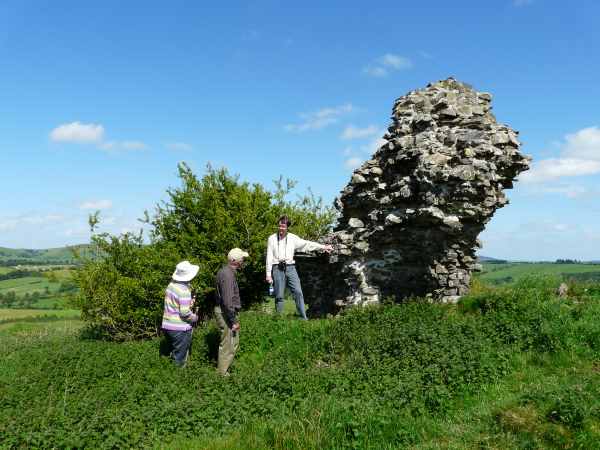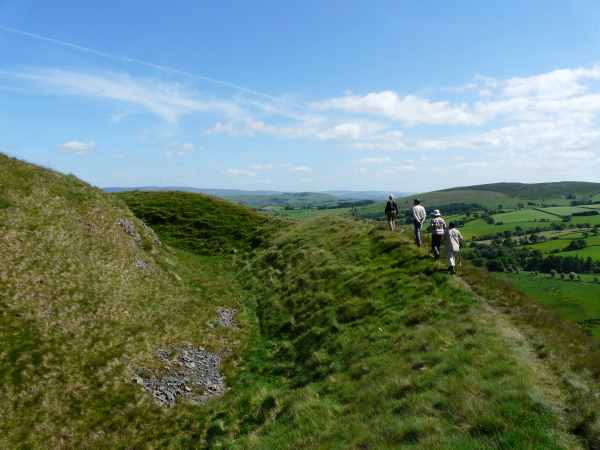Tinboeth Castle
The castle of Tinboeth occupies an elevated position above the A483 about 11 miles north of Llandrindod Wells.
SO 090755
Travelling north on the A483, the site is just over a mile north of Llanbister. After small roads go off to right and left you pass a row of houses as the road curves left. You’ll then see a track going gently uphill on the right. Park in the parking spot opposite and walk up that track.
Travelling south on the A483, the site is just over 2 miles south of Llanbadarn Frynydd; After Llanbadarn Fynydd, the road follows the river, turning right towards the south-west just after the village then looping round to the left to head south-east. As the road starts to straighten start looking out for a parking place on the right a little before a row of houses and pull off here. Shortly after the parking place a track goes gently uphill on the opposite side of the road. Follow this to the site.
Article by Paul Remfry
For further discussion of its origins by Mr Remfry see
http://www.castles99.ukprint.com/Essays/Wales/tinboeth.html
http://www.castlewales.com/tinboeth.html


Tinboeth castle would appear to have been constructed by Roger Mortimer (d1282) in the aftermath of the treaty of Montgomery (1267) in which king Henry III recognised Llywelyn ap Gruffydd (d1282) as the historical Prince of Wales. The castle first otherwise appears in the historical record during 1282, and there is no reason to suppose it long pre-existed this date.
In the Pipe Roll of 1283-4 the monies spent on the royal garrisons in the Mortimer lands were recorded under Staffordshire. Here it is stated that at his death Roger Mortimer kept garrisons for the king at various Mortimer castles. Tinboeth [Dynbaud], was recorded as having five horse and thirty foot at a cost of £13 16s 9d. On 25th July 1307 an inquisition found that in the cantref* of Maelienydd there was a castle at ‘Dymbaud’, but no town. Soon after William Mortimer (d1297) the son of Roger Mortimer of Wigmore was mentioned as William of Castell Tinboeth. The castle was still functional in 1316 and in 1322 was amongst those Mortimer possessions that were surrendered to the king with the disgrace of that family.
This appears to have been its last mention as a functional castle. Undoubtedly the successful conquest of Wales and the security of the previously volatile Welsh Mortimer lands ended the military purpose of this bleak fortress. As no civilian hamlet appears to have formed around this isolated site, and no political reason for it existence could be found, abandonment and decay seem to have followed rapidly, with the consequence that by Leland’s day it was no more than the ‘great ruines of a castle called Tynboeth’
Today the ruins of Tinboeth castle consists of a great rock-cut ditch surrounding an enclosure which was once fortified by a curtain wall. To the east stands the last forlorn fragment of the now largely collapsed twin-towered gatehouse.
*Cantref: A medieval Welsh land division
